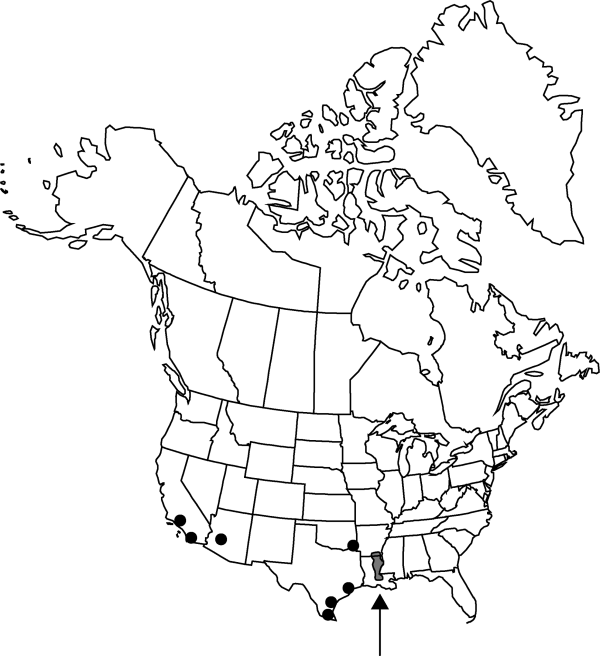Glinus radiatus
in C. F. P. von Martius et al., Fl. Bras. 14(2): 238. 1872.
Stems 0.8–5 dm. Leaves whorled; petiole 1–7 mm; blade obovate or elliptic to broadly spatulate, 5–25 × 2–17 mm, base cuneate, apex broadly rounded to acute. Flowers in clusters of 3–11; sepals lanceolate or oblong, 4.1–6.8 × 1.1–2.1 mm, stellate-pubescent abaxially, glabrous adaxially, apex long-acuminate to attenuate; stamens 3–5. Capsules ellipsoid, 3–3.5 mm. Seeds 10–25 per locule, redbrown to golden brown, 0.4–0.5 × 0.2–0.3 mm, smooth, highly glossy. 2n = 18.
Phenology: Flowering late summer–fall.
Habitat: Moist sandy soils, river bottoms, fields, edges of intermittent pools
Elevation: 0-500 m
Distribution

Ariz., Ark., Calif., La., Okla., Tex., Mexico, West Indies, South America
Discussion
Glinus radiatus is considered native to tropical and subtropical areas in the New World, although it is doubtfully native in North America. While it is unclear whether the species is native in Louisiana, where it is most common, it is undoubtedly introduced in Arizona (M. A. Lane and D. J. Keil 1976) and California (M. H. Grayum and D. L. Koutnik 1982). In Louisiana, Glinus radiatus occurs in the same habitat as G. lotoides, and the two species grow together in some populations. Some evidence of intermediates in those populations indicates hybrids may form between the two species, but this needs further investigation. Glinus radiatus and G. lotoides are most easily distinguished by seed characteristics (J. W. Thieret 1966b).
Selected References
None.
Lower Taxa
"dm" is not declared as a valid unit of measurement for this property.